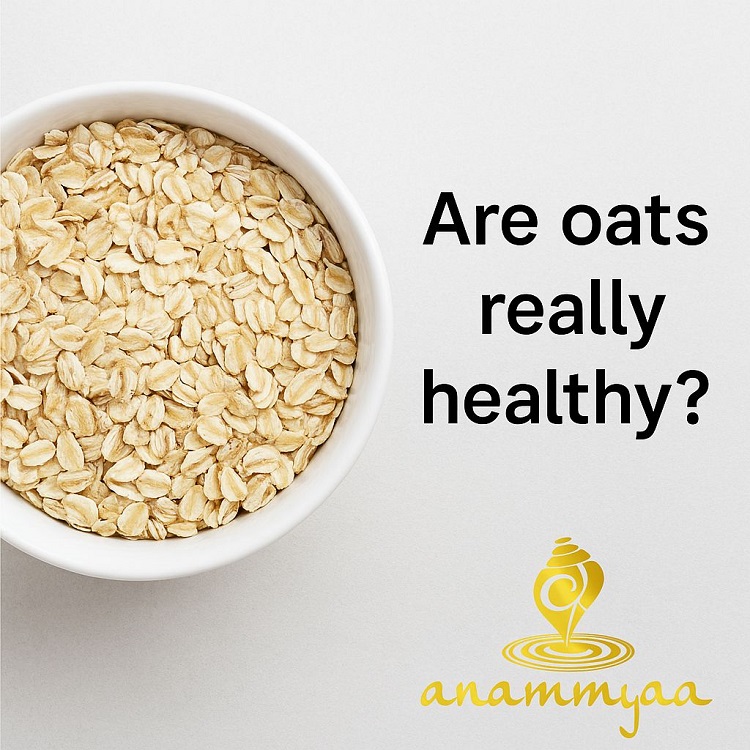The Untold Story of a “Superfood” That Wasn’t Always for Humans
For decades, oats have been marketed as the ultimate health food—high in fiber, cholesterol-lowering, and perfect for weight loss. But is this really true? Or has the story of oats been carefully packaged and sold, masking their less-than-ideal impact on digestion and metabolism?
Let’s peel back the label.
A Brief History: From Animal Feed to Breakfast Cereal
Historically, oats were primarily used as livestock feed—especially for horses and cattle in Europe and North America. They were never a staple grain for human consumption in traditional societies. In fact:
- In ancient Ayurveda and Siddha systems, oats are not mentioned as part of the recommended grains.
- Grains like rice, barley (yava), emmer wheat (Khapli), and legumes like moong dal were used based on a person’s dosha and digestive capacity (agni).
- Oats were considered too heavy, damp, and mucilaginous, making them difficult to digest unless the digestive fire was very strong.
So how did oats become a breakfast staple?
The Industrial Shift
In the early 1900s, oat producers were looking for ways to profit from surplus production. With clever marketing and corporate lobbying, oats were gradually repositioned as a “heart-healthy” food. The FDA approved the cholesterol-lowering claim of beta-glucan (a soluble fiber in oats) based on limited studies, and oats became a poster child for:
Heart health
Weight loss diets
Low-fat, fiber-rich meals
But Ayurveda and traditional systems never supported one-size-fits-all foods—especially not those with heavy, damp qualities.
Why Oats Can Be Problematic
From an Ayurvedic standpoint, oats have the following drawbacks:
1. Heavy (Guru) & Slimy (Picchila) Qualities
They increase Kapha in the body, leading to mucus, congestion, and sluggish digestion—especially when eaten daily or in cold climates.
2. Dampening for Agni (Digestive Fire)
Oats are not easily broken down, especially when cooked into porridge. This weakens agni, causes bloating, and leads to ama (toxins).
3. Not Suited for Vata or Pitta Imbalances
- For Vata, they can be too drying and hard to digest unless heavily soaked and cooked with ghee.
- For Pitta, the high carbohydrate content can spike blood sugar and irritate inflammation.
4. Often Over-Processed
Instant oats or “quick oats” are highly processed, lacking real fiber and nutrients. Many are packaged with sugar, preservatives, and synthetic flavorings—completely defeating any health benefit.

Better Ayurvedic Alternatives
Instead of oats, consider time-tested, sattvic, and easily digestible options that Ayurveda recommends:
- Emmer Wheat (Khapli Gehun) – An ancient, low-gluten grain rich in natural fiber and ideal for balancing metabolism
- Moong Dal – Light, tridoshic, gut-soothing, and rich in plant protein
- Gram Flour (Besan) – Great for Kapha and Pitta, easy to cook, and perfect for savory pancakes, chillas, or light rotis
These are body-intelligent grains and legumes, aligned with your dosha and seasonal needs.
Final Thoughts
Oats are not inherently “bad,” but they are not ideal for all body types—especially not as a daily food. Their rise in popularity has more to do with industrial marketing than holistic health.
Before you put another bowl of oats in the microwave, ask yourself:
Is this food nourishing my unique body—or just fitting into a food trend?
Book your Ayurvedic nutrition consult: 95600-24178
Visit: www.anammyaawellness.com



